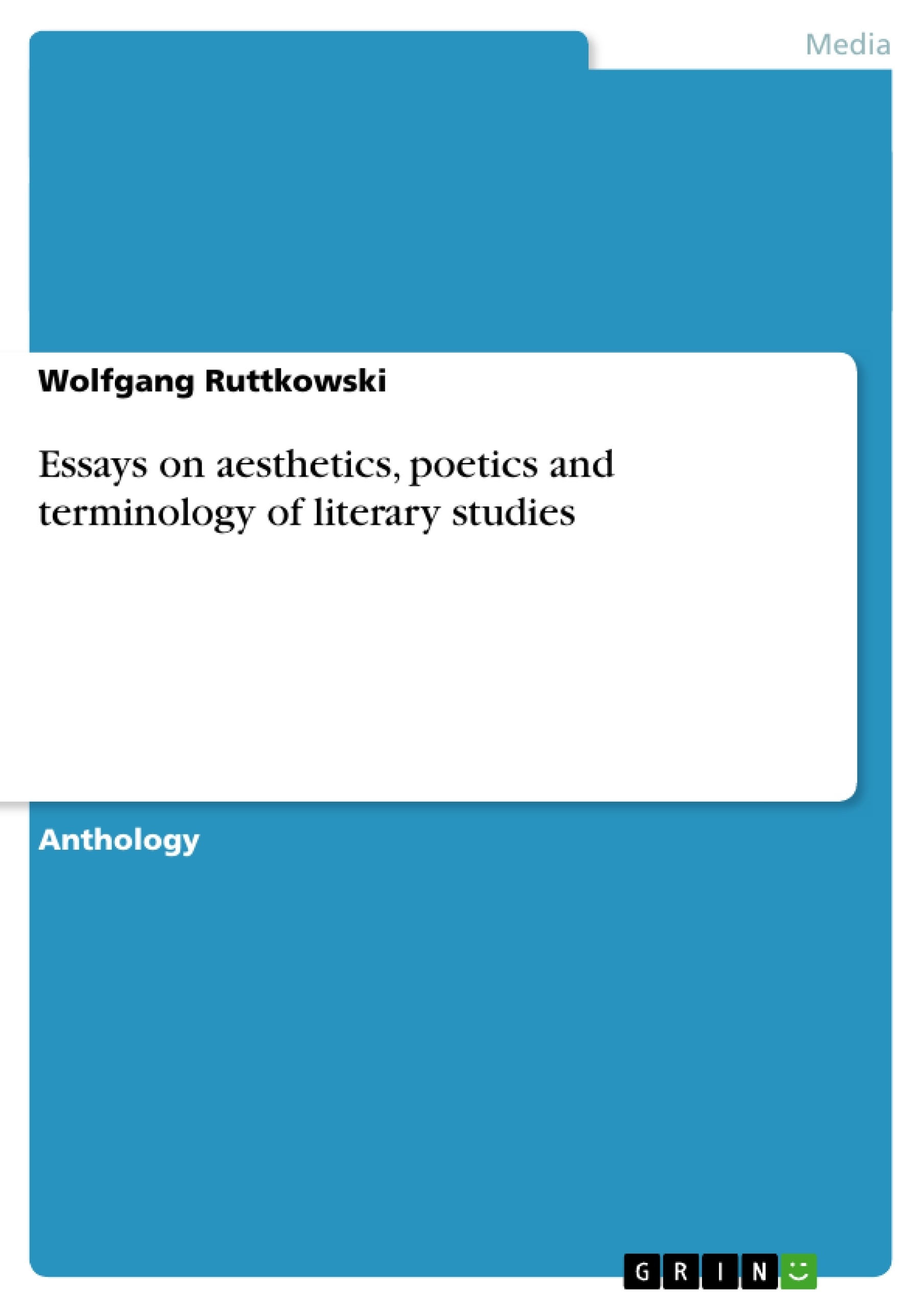Since I have always been interested in “eccentric” topics, my essays may be still of interest and relevant. For example, I wrote the first study of the four main types of the literary chanson, representing an expansion of Emil Staiger’s ‘basic concepts of poetics’ thus including the audience centered stance where all genres excluded by Staiger’s categories can be subsumed that are; presented a systematic comparison and synthesis of Ingarden’s and Hartmann’s literary strata and its usefulness in the psychology of art; provided analysis and integration of literary concepts such as ‘stratum,’ ‘structure,’ and ‘genre;’ wrote an extensive comparative study of literary terminology expanding its scope beyond the European realm; undertook a stratum analysis of musical art forms, and attempted a description of the degree of abstraction in Asian painting and non - representational art.
Most of my articles written in German are being published simultaneously by the same publisher, except for those concerning the teaching of literature and cultural studies. My tri - lingual (German/English/Japanese) homepage composed by my students includes a list of my publications. It can be found under http://www.cc.kyoto-su.ac.jp/~wolf.
Weil ich mich immer für „ausgefallene“ Themen interessiert habe, finden meine Aufsätze vielleicht noch Interesse und sind nicht veraltet. (Sie befassen sich erstmalig mit: Einer Untersuchung und Beschreibung des lit. Chansons als Gattung sowie der Abgrenzung seiner vier Haupttypen; einer Erweiterung der Staigerschen „Grundbegriffe“ auf die „publikumsbezogene Grundhaltung“, in der sich alle Gattungen unterbringen lassen, die in seinem System keinen Platz fanden; einem systematischer Vergleich und der Synthese von Ingardens und Hartmanns Schichtensystemen und deren Anwendung auf die Kunstpsychologie; der Analyse und Integration von Literaturbegriffen wie „Schicht“, „Struktur“ und „Gattung“; einem umfassenden Vergleich von Literaturterminologien über die europäischen hinaus; der schichtentheoretischen Analyse des Musikkunstwerks sowie der Beschreibung der Abstraktionsgrade in asiatischer Malerei und ungegenständlicher Kunst). Im gleichen Verlag erscheint gleichzeitig ein Sammelband meiner in deutscher Sprache geschriebenen Artikel (außer denen zur Literaturdidaktik und Kulturkunde).
Meine von meinen Studenten angefertigte dreisprachige (dt.,engl.,jp.) Homepage (http://www.cc.kyoto-su.ac.jp/~wolf) enthält eine Publikationsliste.
Inhaltsverzeichnis (Table of Contents)
- FOREWORD
- 1) "Stratum, Structure, and Genre"
- In: Publ. of the University of Tokyo, Lang. and Lit. Series (1973) 153 164.
- 2) “The Strata - Model in Poetics”
- Paper presented at the Annual Meeting of the Japanese Society for Germanistics in Tokyo (20. 5. 1989).
- 3) "The Main Differences Between Roman Ingarden's and Nicolai Hartmann's Strata - Systems"
- In: Acta Humanistica 19/3, For. Lang. and Lit. S. 17 (June 1990) 64 - 82.
- 4) "On Beardsley's View of the Artistic Process"
- In: Acta Humanistica 24/1, Human. S. No. 21 (1994) 334 - 340.
- 5) "Our Concept of Art in Light of the Strata Theory"
- In: Acta Humanistica 26/3, For. Langs. and Lit. S. 23 (1996) 50 - 61.
- 6) "Interactive Fiction: What Does it Want to Be, What Can it Be?"
- In: Acta Humanistica 27/4, Human. S. No. 24 (1997) 98 - 129.
- 7) “Central Concepts of Aesthetics: A Proposal For Their Application”
- In: Acta Humanistica, Humanities S. No. 26 (1999) 203-222.
- 8) „On the Relationship of Comparative Literature to,Strata Poetics', and, Fundamental Poetics"
- in: Acta Humanistica et Scientifica Universitatis Sangio Kyotiensis, Humanities Series No. 27 (March 2000) 221-241.
- 9) "Cabaret Songs"
- In: Popular Music and Society, Vol. 25 3/4 (2001) 45 - 71.
- 10) "East And West And The Concept of Literature”
- In: Journal of Comparative Literature and Aesthetics, Vol. XXIV, Nos. 1 - 2 (2001) 89-125.
Zielsetzung und Themenschwerpunkte (Objectives and Key Themes)
This collection of essays aims to provide a comprehensive analysis of various concepts in aesthetics, poetics, and the terminology of literary studies. The essays explore the interconnectedness of these concepts, emphasizing their importance in understanding the nature of artistic creation and reception.
- The concept of genre in relation to stratum and structure.
- The significance of the strata model in poetics.
- A comparative analysis of Ingarden's and Hartmann's strata-systems.
- The application of strata theory to our understanding of art.
- The interplay of comparative literature and strata poetics.
Zusammenfassung der Kapitel (Chapter Summaries)
The chapter "Stratum, Structure, and Genre" examines the interrelation of these terms, arguing that a comprehensive understanding of genre requires considering both stratum and structure. The chapter then delves into the strata model, drawing heavily on Hartmann's ontology. This model posits a stratified world, with higher levels built upon and "overmolding" the lower levels. The chapter concludes by comparing and contrasting Hartmann's and Ingarden's strata models, highlighting their respective contributions to literary studies.
Schlüsselwörter (Keywords)
The central keywords and focus topics of these essays include: stratum, structure, genre, aesthetics, poetics, literary studies, strata model, ontology, Hartmann, Ingarden, comparative literature, artistic process, and the concept of art.
- Citar trabajo
- Dr. Wolfgang Ruttkowski (Autor), 2007, Essays on aesthetics, poetics and terminology of literary studies, Múnich, GRIN Verlag, https://www.grin.com/document/83254



